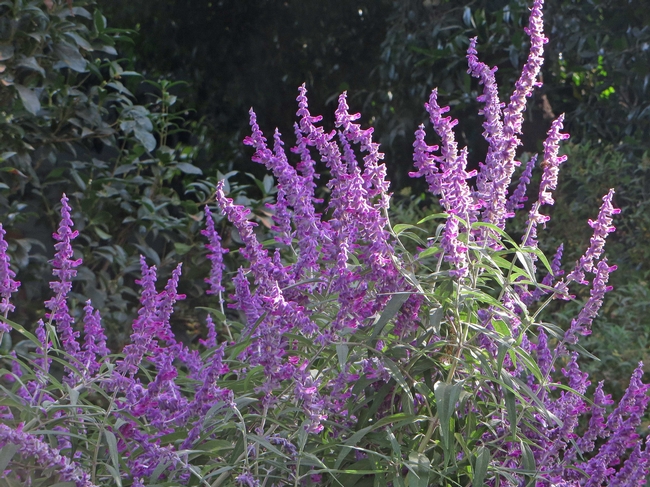By Barbara Ott, Butte County Master Gardener, March 4, 2016.

Humans have been observant students of nature for millennia. Over time we have selected grasses that produce heavy-headed grains and we've turned tiny bright flowers into large garden show-offs. The development of seeds by hybridization can be done by anyone willing to selectively move pollen by hand from plant to plant within a plant family. Learning how a plant grows, when it reproduces, and if it is an annual or perennial will aid anyone who wants to experiment with propagating seeds to make new plants.
Plants that form a mass (such as day lilies) can be divided, usually in the early spring, by using a sharp shovel to dig into the mass and separate it into parts to form new plants.
Plants that can be propagated via leaf cuttings (like African violets) can be started at any time by taking a leaf, setting it into soilless plant medium (such as perlite) and keeping it moist, but not wet.
Hydrangeas can be propagated in the spring by pruning off five- to six-inch sections of nonflowering shoots that have two to three pairs of leaves (take your cuttings from close to the bottom of the plant, as woodier cuttings generally produce more roots). Remove the leaves directly above a node (a leaf-growing bump on the stem). Clip the remaining leaves in half, to help increase root production. Fill five-inch pots with rooting medium; and press the cuttings into the medium, keeping the leaves above the soil surface. Water and place under plastic or glass to make a humid environment. Old cracked aquariums can serve as “greenhouses” for cuttings. Place the Hydrangea cuttings in bright filtered light. Once roots develop, a new hydrangea is ready.
To propagate salvia from basal stem cuttings (cuttings near the plant's base), clip in early- to mid-spring. Strip leaves from stems and snip off the shoot tip. Make sure you have a node near the bottom of the stem. Place the stem into a small pot filled with a 50/50 measure of sand and perlite, and keep it warm and moist. The resulting plant will bloom that summer. To make a soft stem tip cutting from salvia, make the cutting in early autumn following the procedure described above. Autumn cuttings need to be wintered over in a warm environment, and then planted in the spring.
Keep in mind that warmth from an electric seed pad will help cuttings root and grow readily.
If you want more plants but don't want to purchase them, make some of your own!